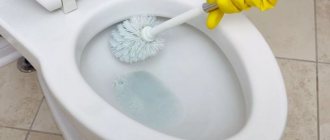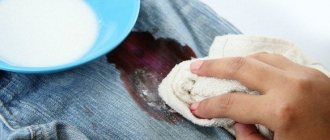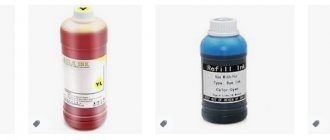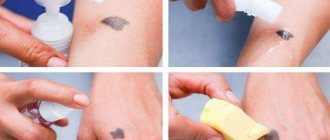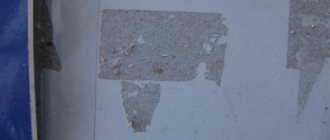Home decor is never complete without plastic. Beautiful appearance, easy cleaning, ease of use, and low cost attract consumers. The material is used for finishing ceilings and panels, manufacturing shower cabins, furniture, dishes, and household appliances.
Among the disadvantages of plastic, rapid contamination and damage by limescale are noted. To combat these problems, they resort to both traditional methods and household chemicals. It is important for housewives how to remove water deposits on plastic efficiently and safely.
The main reasons for the formation of limescale on plastic
Plastic is a relatively inexpensive material, but it quickly becomes dirty: limescale deposits appear.
Hard water, containing mineral impurities and lime, forms a deposit when settling on the surface. Its distinctive features:
- white-gray color;
- structure hardness;
- low thermal conductivity.
Constant contact with water and high humidity provoke the accumulation of calcium carbonate on plastic products. Gradually, the coating turns into water stone if you do not clean it in a timely manner.
Cast iron surfaces
If the lime deposits on the cast iron bathtub are not very old, they can be easily removed with ordinary dishwashing detergent. Apply a small amount to the surface, paying special attention to the area around the drain and the bottom of the walls, rub with a sponge, and rinse.
Serious “artillery” in the form of creamy products (Comet, Cilit, Pemolux, etc.) will help remove more serious contamination from a cast-iron enameled bathtub, as well as metal taps and hoses. But when choosing a product, pay attention to the composition, which should contain anti-corrosion inhibitors that act only on plaque without damaging the surface of the product itself.
How to properly remove limescale from plastic or plastic
This step-by-step guide will tell you how to remove limescale from plastic correctly:
- Prepare the cleaning product and the necessary equipment: rags, mops (for the ceiling), foam sponges, a basin.
- Cleans away cobwebs and dust.
- Apply the solution with a soft brush or foam rubber to a small coverage area.
- Wash off any remaining product with water.
- Wipe the treated area dry.
- Repeat the process until the mineral deposits are completely removed.
It is advisable to use products without chlorine. If chlorine-containing chemicals are used, it is advisable to test the reaction of the plastic on an inconspicuous part of the product.
Household chemicals
How to clean the window sill of a plastic window? Experienced housewives use universal products.
Among the variety of products, the following can be distinguished:
- Mr. Proper. A universal dirt killer in powder or thick gel form. The liquid product contains abrasive particles. It copes well with various contaminants, but afterward the surface must be thoroughly rinsed. Otherwise it will be a dust magnet.
- Cillit Bang. With a convenient and economical sprayer, which greatly facilitates the work. Quickly and effectively deals with various contaminants, including grease deposits on the kitchen window sill. But after work, the room needs to be checked, as the solution has a strong and unpleasant odor.
- Comet. This product is sold both in powder and gel form. And for cleaning window sills, the second option is suitable. Its main purpose is to combat greasy stains, so it will be indispensable for a kitchen window.
- Domestos. Detergent and bleaching agent. Works well on both grease and rust stains.
- "Pemolux". Soft abrasive powder. Gentle, but not very effective. Belongs to the budget category of goods.
- Mr. Muscle. Thick cream with cleaning and whitening effect. Shows good results when removing various contaminants.
- Froch. A line of substances for removing light stains. Suitable for use in rooms with small children, allergy sufferers and asthmatics.
- Help. A spray solution with a strong whitening effect. Indispensable for removing stubborn stains and yellowness.
- "Edelweiss". Cleaning and whitening spray.
- Sanita. A product to combat heavy dirt and grease.
- Cif. Gives abundant foam and washes away stubborn dirt well.
- Cosmofen 10. Effective, but very toxic. Use with caution, only when absolutely necessary and only with windows open. After work, it is important to ventilate the entire room. Requires thorough rinsing.
This is not a complete list of all suitable means. You can take any other one, as long as it is not destructive to plastic. Plastic surfaces are negatively affected by solvents, acetone and any acids. Therefore, when purchasing household cleaning chemicals, you must carefully read the composition and avoid products with these components.
Safe products and tools
To remove plaque from plastic, avoid using sharp objects, hard-bristled brushes, or metal scrapers. Tools scratch the surface and cause cracks to form. They are a source of dust that is difficult to clean. In addition, they cause yellowing and darkening of plastic products.
It is prohibited to use aggressive agents that contain:
- formic acid;
- formaldehyde;
- acetone or other solvents.
Acidic cleaning products are not suitable for removing limescale deposits: they corrode the plastic.
Safe chemistry: how to choose the right one
PolyBas is a universal product; it can also be used for cleaning floors.
Remove plaque from plastic products only with gentle liquids and gels. When using household chemicals, it is useful to make sure that there are no abrasive particles in the composition. Often, drugs that are positioned as gentle turn out to be abrasives. They will do an excellent job with limestone on metal, but will ruin the product. Proven detergents are how to effectively remove limescale from plastic. Users highlight:
- PolyBass. The liquid does not destroy plastic and acrylic surfaces. Application is carried out by spray. Removes soap scum. To clean acrylic and plastic from the limescale layer, leave the product on the surface for 15 minutes. Alcohol will remove stubborn stains and help the structure dry out quickly.
- Cillit Bang. The Silit Beng line includes several products. Getting rid of lime and rust stains, fighting stains is the task of the anti-plaque product. Apply the composition to the contaminated area, wipe the surface and after 2-5 minutes wash off with water. Active foam for shower and bath can dissolve deposits in hard-to-reach areas. The liquid, penetrating inside, does an excellent job of removing dirt, leaving shine and shine. Ideal for shower enclosures.
- Acrylan Bagi. Used to remove limescale from plastic. The product is suitable to freshen the shower stall and protect it from contamination. The advantages of the product include the elimination of rust and mold. Akrilan is equipped with a dispenser.
- Sanelit. Oxygen gel will clean simple limescale stains. Easily spreads over the coating, forming a thick foam. It has a pleasant aroma and does not irritate the nasal mucous membranes. Suitable for maintaining cleanliness.
It is important to use gloves to protect your hands from exposure to household chemicals. Also, do not forget that each manufacturer indicates instructions that must be followed.
Folk remedies: advantages and disadvantages
To remove limescale deposits, they resort to traditional methods. They are less effective than store-bought detergents, but are safer.
Gentle but effective methods for cleaning limescale deposits on plastic include:
- Citric acid. Powder (20 g) is dissolved in a glass of water. The liquid is used to treat the layering. After a quarter of an hour, remove the plaque with a sponge. Then wipe the product.
- Soda. When washing plastic pallets, the product is distributed over a damp surface. After a few hours, remove the residue with a sponge and rinse with water. The product is suitable for combating limescale on children's dishes.
- Ammonia. To wipe the plastic, dilute 1 tbsp in 1 liter of water. l. facilities. The treated surface is washed off after 5-7 minutes with hot water. It is important that the room is ventilated when performing the manipulation.
- Mustard powder + salt and soda. Helps when limescale on the product is weak.
- Soap. A concentrated solution will be needed to remove simple limescale deposits. Soapy liquid can be replaced with washing powder or dishwashing detergent. Contaminated plastic is treated with a napkin. After 10 or 15 minutes, remove the remaining mixture from the plastic coating and wash with water.
Regular table vinegar 9% has proven itself well: a cheap, effective remedy. Found in any kitchen. For example, to get rid of limestone, cover the formation with vinegar and leave for 30 minutes. Then wipe with a sponge. If the limescale has not peeled off completely, leave it for another half hour. The contamination must come off completely.
Household chemicals
Housewives have adopted a huge amount of household chemicals that perfectly fight plaque. There are also a lot of folk methods that can quickly and cheaply clean nasty plaque.
Liquid and gel products usually do not contain abrasive additives that can scratch plastic surfaces. They do not act aggressively, they remove plaque gently and easily. Most often they are used when the plastic is not in a bad state.
After using cleaning products, the plastic surface should be thoroughly rinsed with cold water and wiped dry. This cleaning method can be used once a week; limescale deposits are removed regularly, so it is easy to remove.
If the process of removing plaque is started, you have to use potent products with a paste and creamy consistency. For the time specified in the instructions, treat the surface of the plastic with the product and then wash it off, rinsing well with plenty of water.
The choice of cleaning products that will help remove limescale deposits is huge. Each housewife will be able to choose what she likes. And, of course, it is worth reading the composition of the product so as not to spoil the plastic surface. It is prohibited to use household products for plastic if it contains:
- formic acid;
- formaldehyde;
- solvent or acetone.
Aftercare of products
To ensure that caring for plastic products helps reduce limescale deposits, follow the following recommendations:
- use filters to soften water and get rid of unnecessary impurities;
- monitor the serviceability of plumbing equipment;
- After using the shower stall, it is mandatory to wipe the walls and doors with special towels;
- avoid abrasives, which lead to damage to the appearance of the product and the accumulation of dirt in scratches;
- After using a soap solution, it is advisable to treat the plastic coating with polish: the film formed is protection against microcracks.
Maintain cleanliness and remove limescale using improvised means, as well as specially designed household chemicals. Regular care of plastic will avoid problems in the form of lime deposits and will extend the service life of products.
Acrylic surfaces
Be especially careful when cleaning lime deposits from an acrylic sink or bathtub. It cannot be cleaned with powders or other abrasives.
But citric acid copes with this problem perfectly, the algorithm of work is as follows:
- Take a large sponge and a couple of packets of acid;
- Pour the contents into a container, add water (half a sachet of acid per 1 cup of water), stir until completely dissolved.
- We begin to clean the bathroom by dipping a sponge in a solution of water and acid, thoroughly rubbing all the depressions and bulges. Leave for 15 minutes.
- After this, soak the sponge in the solution again and walk over the surfaces again, washing off yellowness and plaque. At the end of the procedure, rinse everything thoroughly with clean water and be amazed at how your acrylic bathtub has been transformed.
Additional Tips
You can use any suitable method to remove rust marks from a knife.
When choosing a product, you should focus on the degree of contamination, financial costs and the possibility of using the method. In any case, it is advisable to take into account additional recommendations that will facilitate the cleaning process and help speed it up:
- If the rusty coating is significant and has not disappeared completely after the first treatment, it is necessary to repeat the cleansing with the same product or choose a different one.
- If the corrosion process has gone far and a solid, dense coating of rust has formed on the knife, then it is advisable to first remove it mechanically (with sandpaper), and then complete the cleaning with any liquid agent.
- When using any chemical reagents, it is necessary to wear rubber gloves to protect your skin.
- After complete removal of rusty traces, the blade is thoroughly washed with water and dried well. The presence of moisture can reinitiate corrosion.
Adviсe
Simple tips will speed up the process of removing red stains:
- Traditionally, a 9% acetic acid solution is used for cleaning. If you don’t have one at hand, you can use 70%, provided that it is diluted with water (1:1 ratio).
- Surfaces treated with vinegar should not be actively rubbed with metal brushes and hard sponges (there is a high risk of color loss, scuffs and scratches).
- When choosing between white table vinegar and apple cider vinegar, it is better to give preference to the second option to combat rust stains. It will quickly deal with the problem of yellow stains.
Working with vinegar solution requires compliance with certain precautions. Removal of stains is carried out only in a well-ventilated area, wearing a respirator and protective gloves.
Ignoring recommendations may cause skin burns and respiratory tract irritation.
Removal of stains is carried out only in a well-ventilated area, wearing a respirator and protective gloves. Ignoring recommendations may cause skin burns and respiratory tract irritation.
Recommendations
The following tips from cleaning experts will help you cope better with the task:
- Before you begin bleaching, the surface must be prepared - remove dust and dirt.
- All work should be carried out wearing rubber gloves to protect your hands.
- It is necessary to consider what kind of plastic will be processed. For some types of products, special products are produced marked “for refrigerators”, “for microwaves”, etc.
- After cleaning is completed, the plastic surface should be wiped dry.
- When treating plastic against yellowing with vinegar essence, alcohol, Dimexide and other substances, you must remember that if the cleaning agent gets on areas with inscriptions, they can also be erased.
- To clean small plastic items, it is convenient to use an old toothbrush.
The most complete and useful information about methods and means of removing yellow spots and yellowness from various surfaces and products is presented in this section.
Removing other types of contaminants
Not only water stone, but also other contaminants are deposited on sinks and bathtubs. Rust, which occurs as a result of corrosion of steel pipes, leaves brown and yellow stains.
Also, difficult to remove stains arise from potassium permanganate and brilliant green. Combined solutions prepared at home will help you cope with any type of contamination.
How to clean a bathtub from potassium permanganate and brilliant green?
Potassium permanganate and brilliant green are coloring substances that leave stains on the surface of the bath. If you don’t wash them right away, then you will have to buy household chemicals to remove them.
Be sure to read:
How to remove stone, rust from the toilet and limescale in the tank using folk remedies?
But first, use solutions prepared independently:
- Lemon juice, hydrogen peroxide or vinegar will help discolor and neutralize potassium permanganate.
- The brilliant green is removed using ammonia or simple alcohol or vinegar. You can use baking soda. If this does not help, then use household chemicals.
Bathtubs with an acrylic coating cannot be cleaned with substances containing abrasive particles.
How to clean a bathtub after renovation?
After renovation, the bathroom remains stained with paint and glue. To remove dirt from enamel, use a solvent. But if the old metal bathtub has been restored and the enamel has been restored, an aggressive substance cannot be used.
To restore the product to its good appearance, the enamel is completely replaced with new one.
Also, the solvent is not used on products made from acrylic. Remove paint from a new item with a blade or sharp knife. The procedure is done carefully so as not to damage the enamel.
How to clean bathtub sealant?
If the sealant is not removed from the tile or bathtub in time, it begins to darken, then fades, deteriorates and loses its properties. Because of this, you have to remove the old layer and replace it with a new one.
There are 2 ways to remove sealant:
- Mechanical. Removal of sealant mechanically occurs by scraping off the old layer. The work is carried out with a scraper, pumice stone, knife or other sharp tool. An abrasive mixture is also suitable. The top layer of silicone is cut off with a knife, then scraped off with a scraper. The area is sanded with pumice or sandpaper. The sealant can be easily washed off with any washing liquid if it is heated to 400 degrees with a hair dryer. This method is used for glass, enamel bathtubs and tile cladding.
- Chemical. Old sealant is removed with special cleaners or solvents (acetone, gasoline, etc.). A thick layer of silicone is removed with a sharp knife, and its remains are treated with a solvent. If the contamination is old, then it is cleaned after 1.5 hours with a damp cloth with salt, then washed with a washing solution. For light contamination, it is enough to wait 50 minutes. From store-bought cleaners, choose aerosols, pastes, and liquid mixtures. They are applied to the stain according to the attached instructions and then washed off.
How to clean an old bathtub?
An old bathtub gets dirty 2 times faster.
This happens due to microcracks formed on it, into which dirt gets clogged. It’s not always possible to get your plumbing in order and you have to throw it away.
You can try to correct the situation using soda ash and baking soda. Soda is mixed in equal proportions and water is added. The gruel is rubbed into the dirt with a brush, and a mixture of vinegar and powdered bleach is placed on top. After 30 minutes, everything is thoroughly washed.
Domestos - ideal for cleaning plumbing fixtures
An effective solution based on hydrochloric acid can dissolve even stubborn waterstone stains. To get rid of limescale, just apply the gel for 5 minutes. It is important not to overexpose the cleaning composition on the surfaces being treated, otherwise you may damage them. Household chemicals last a long time because they are used very economically. It is necessary to take precautions, if possible, work with the product with gloves and limit children's access to it.
Home methods for dealing with contamination of PVC panels
To clean the panels, you don’t have to look for products in the store and spend money. Take a look at your home supply of products and find what you need for effective cleaning.
Soda
How to prepare washing powder: dilute the required amount of soda with water to a paste.
Moisten a sponge in the resulting paste and apply to the dirty area. Leave to act for several hours, then clean and rinse with running water. Wipe with a dry cloth.
Use the product carefully. Soda consists of tiny particles that can scratch the plastic and lose its visual appeal.
Vinegar and alcohol
Do not use liquids on products with printed designs!
To tidy up the panels, you need to moisten a sponge in a small amount of alcohol, vodka or vinegar 9%. Rub well. Rinse off with cool water.
If you need to wash colored plastic ceilings or walls, dilute vinegar with water in a ratio of 1:3. Test the reaction on a small, inconspicuous area before applying.
How to prevent lime deposits?
The formation of limescale is a very common problem; the following recommendations will help to significantly reduce the likelihood of its occurrence:
- After glass products come into contact with water, they must be dried. If possible, wipe dry. This will not only allow you to do general cleaning less frequently, but will also keep your glass surfaces in good condition.
- If the water is so hard that it becomes a problem, you can install a filter or use a water softener at the entrance to your home or apartment.
- When cleaning, it is necessary to use products that are active against limescale.
- Using sprays allows you to distribute the product evenly, making it faster and easier to clean the glass surface.
What is the best way to clean a plastic kitchen?
In such rooms, plastic products are also exposed to constant high temperatures. Fatty deposits, which accumulate as a result of constant cooking, also have a negative effect. However, it is still possible to solve the problem.
When cleaning kitchen surfaces, substances are used that are harmless to the body, since they can enter the esophagus with food or due to contact of dishes with the surface:
- If it's not a glossy product, you might want to try mustard powder. This method does not require dilution with water, but is used dry - that is, it has a mechanical effect. Sprinkle the powder onto the affected surface and wipe with a cloth.
- The same trick can be done with regular baking soda. Rub the countertop with a sponge and leave for 20 minutes, and after the time has elapsed, rinse thoroughly.
- In some cases, sunflower oil diluted with water will be effective. Keep the proportions two to one. Apply the resulting liquid to the affected area for 15 minutes, and then wipe with a damp cloth.
Taking into account the coating material
Different materials require an individual approach to combating limescale. Before the process you must:
Acrylic
Bathtubs made of polymer materials attract buyers with their light weight, low price and variety of shapes. They are easy to clean due to the absence of pores on the surface and are less susceptible to contamination.
For regular cleaning, a soap solution and a sponge are sufficient . If the moment is missed, the bowl of the product is covered with lime deposits, it is necessary to use industrial sprays and gels with special markings (Cif Cream, Acrylan, Sun Klin) or a home solution based on citric acid or lemon juice.
To care for a bathtub made of polymer materials, only special sponges are used, for example, “Chistulya” for acrylic, enamel and earthenware.
Enameled
The enamel coating, according to GOST, has a number of features:
- resistant to alkali (sodium hypochloride, chlorine-containing bleaches, soda);
- tolerates cleaning with industrial abrasive detergents (Comet, Pemolux);
- does not allow prolonged contact with inorganic acids (contained in “Toilet Duckling” products, some types of Cillit Bang).
Prolonged contact with strong acids destroys the enamel, the surface loses its shine, color, and becomes rough.
Steel
Bathtubs are more resistant to mechanical damage, which can lead to rust, than cast iron.
They do not tolerate high temperatures well. It is unacceptable to wash a steel bowl with hot water ; this will lead to cracking of the enamel.
The choice of means for removing plaque from such a product is quite wide: from cleaning and bleaching agents to concentrated gels and solutions. Mandatory condition: in tandem with a soft foam sponge.
Cast iron
Bathtubs made of cast iron are durable, stable, not subject to corrosive processes and retain heat well.
How I found my ideal hair growth product
Hello dear! I want to share with you my solution to the sensitive problem of hair loss . The problems are very serious, at least for me. I would never have thought that this misfortune would touch me, especially at the age of 29 (read more...)
To keep the enamel surface clean, regular detergent and a soft sponge are sufficient after each use . If plaque does form, you can use both powdered products and liquids containing chlorine, alkali and weak acids for removal.
It is necessary to avoid mechanical damage to the surface, this will accelerate the formation of stains and plaque in the future.




